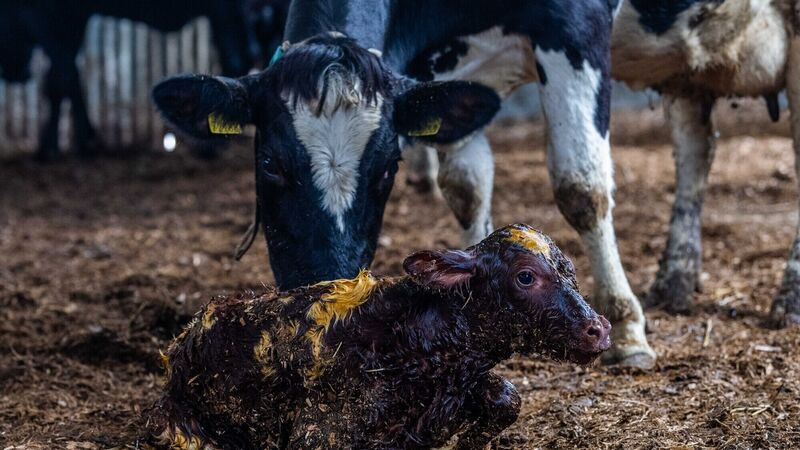Brian Reidy: Getting your spring calving preparation right

Get your calving camera up and running so that if any repairs or updating is needed it will be done before calving commences. Picture: Andy Gibson.
Spring calving is about to kick off over the coming weeks in spring dairy herds and preparation well in advance is critical for a smooth run.
Be sure that you have everything ready for the season ahead, or a sure as you can be! Check that the water troughs in the calving boxes are functioning correctly. Take out the calving Jack and see that it is working and that the two ropes are present and check that the Jack is not slipping and that the two ropes are not worn or thinned out. It is worth having spare ropes, springs, retainers and ratchet plates. Stock up on lubricant and gloves to aid in any difficult calving. Ensure you have iodine or whatever spray you normally use on the newborn’s navel. Make sure that if you have a calving gate that it is fully operational, and the locking rope is in good nick.
Get your calving camera up and running so that if any repairs or updating is needed it will be done before calving commences. Is your Wi-Fi in the yard connected? Most will now have access to their calving camera on smartphones. Install the app on the phones of anyone working or helping out on the farm so that if you need them to keep an eye on cows, then it is easy for them to do so. We all need a break at some point during calving.
Monitor the first few cows to calve carefully for metabolic disorders and held cleanings. Achieving good intakes in early lactation make all the difference. Grass silages made in 2024 have some interesting mineral profiles and there is a huge potential for problems if proper mineral supplementation is not provided to cows. Potassium and Sodium are high in many silages and additional magnesium and straw may be required in dry cow diets to help counteract these issues. Seek advice quickly if you have with cows or calves.
Getting sufficient colostrum into calves within the first 3-4 hours of life is critical to that calves’ future lifetime performance. Calves who get poor volumes or poor-quality colostrum end up with a significantly depressed immune system. Poor quality colostrum is directly related to inadequate protein and mineral nutrition in the dry cow period. Supplementation with a little protein for at least the last 3 weeks before calving will have a dramatic effect on the quality of colostrum supplied by the cow. This principal will apply equally to dairy and suckler cows. If you have vaccinated cows for calf scour, then it is critical to get the desired volume and quality of colostrum into calves so that the vaccine works properly.
In many dairy herds, calf sheds continue to be pressure point over the last few years. Expansion has seen extra calves in sheds and can lead to a higher disease pressure if not well managed. TB has also been the cause of a lot of pressure on calf rearing facilities. Having very young calves in the same shed as 3–4-week-old calves can be difficult to get right. Assess your calf shed for good airflow and try to avoid draughts that can cause calves to be too cold. Aim to get air moving upwards as it enters the shed, rather than trickling in from the sides.
Automatic calf feeders are an excellent tool in reducing labour and providing targeted nutrition to calves. They are also excellent for health monitoring as they alert you much faster to calves not drinking properly. One thing I really like about them is that you can leave weaned calves in the same pen once off milk and this is much less stressful on calves.
It is worth noting that the best calf sheds are always the ones that are easiest to clean out as these will be kept much fresher throughout the season.
Two items which are a significant cost to calf rearing are milk replacer and calf starter rations. You really shouldn’t pull back on the quality of either. Purchase both based on previous years calf performance. With milk replacer, it is important to get good growth in your replacement heifers so keep the protein percentage up. If you are selling young calves, then lower protein for these will have a bit more flesh on them. Most importantly, if a powder works on your farm, then I would be slow to change.
When it comes to calf starter, again if you are happy with calf performance on a particular mix then keep feeding it. I always prefer to see muesli type rations being fed right up close to weaning as these feeds are higher in physical fibre and particle size and as a result help more with rumen development. If the calves like the ration and eat lots of it, why would you stop feeding it in favour of a cheaper one that they don’t like as much? You only get to rear the calve once.













